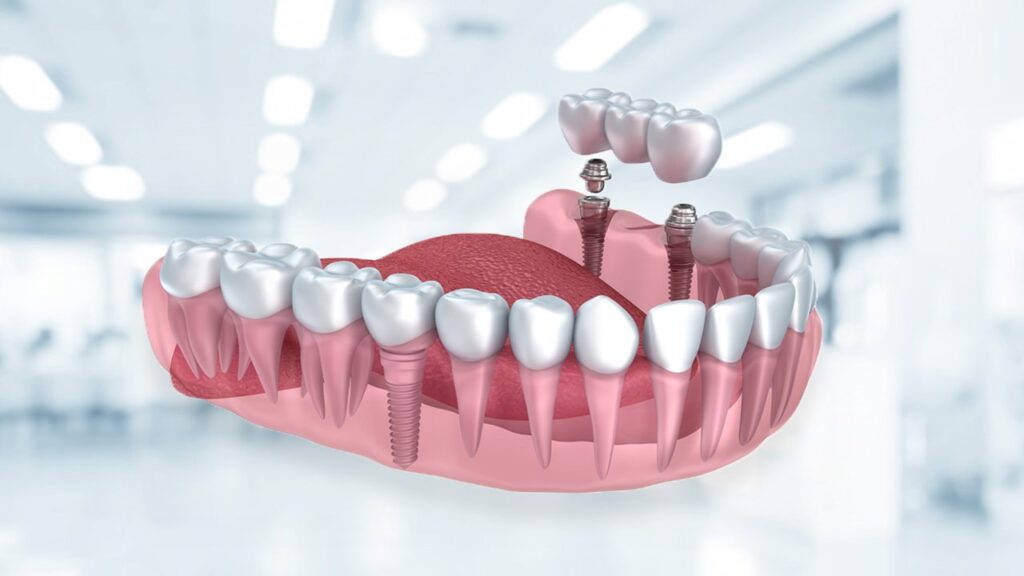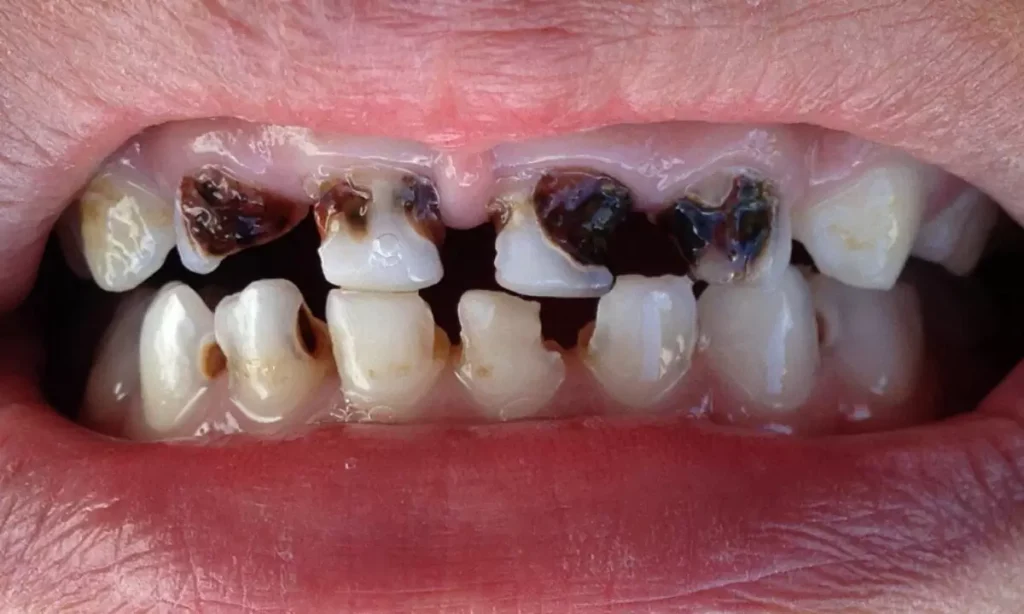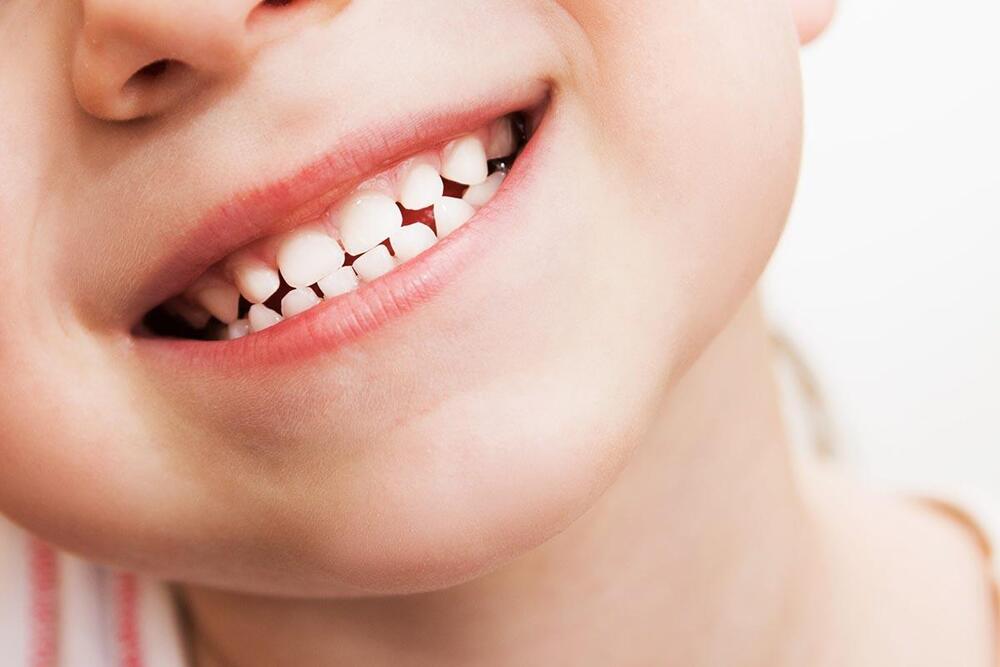Imagine a person’s face as an architectural structure. For an aesthetic dentist, the front teeth serve as the showcase, reflecting, describing, and synthesizing the person’s smile, image, and character, portraying their personality to those they interact with. Teeth are incredibly important for overall health. Moreover, the positioning of teeth in the mouth differs significantly when smiling, speaking, or with closed lips. While there may be no issue when speaking, a person’s charisma may be compromised when smiling, as all the gums are visible. Nowadays, everyone knows that a smile represents one’s image, especially in our digitalized world where everyone has digital tools at their fingertips.
Now, the question arises: is it possible for our patients to achieve an aesthetic smile without cutting their teeth? Digital measurements and designs are now the reality of dentistry. With digital measurements taken from the individual and digital designs made accordingly, it’s possible to create aesthetic designs using porcelain laminates as thin as contact lenses produced by three-dimensional printers without cutting the teeth. One way to determine whether these treatments will be performed is through analyses conducted on the teeth. Photography and mock-up procedures performed directly on the teeth provide both the dentist and our patients with insights. The treatment method that brings teeth to an aesthetic appearance without cutting them is also called Minimal Invasive methods. In modern dentistry, it’s an application aimed at preserving the original tissue as much as possible. Therefore, if our patients suffer from an aesthetic appearance issue with their teeth, we offer solutions using evolving technology to achieve an aesthetic appearance without touching their dental tissues. The forefront of these solutions is the Minimal Invasive methods.
For individuals seeking a new smile design, after conducting a photo analysis and determining the desires, if the requests involve aesthetic solutions without touching the original teeth, this can be determined after the mock-up application, followed by treatment planning. The analysis conducted through photographs focuses particularly on evaluating the teeth. Based on this evaluation, the needs are determined. Is it a discrepancy in gum level, misalignment of teeth with each other, or the color and shape of teeth? A decision is made on all these aspects. Orthodontic treatment and even digital orthodontic applications are usually performed for misalignment of teeth.
Alignment Treatment In correcting the alignment of teeth, the method called digital orthodontics, using three-dimensional scanners taken from the mouth, evaluates the measurements digitally, then produces transparent trays. These trays are used for about six to twelve months, depending on the severity of misalignment.
Gum Reshaping Misalignment of gum levels is treated with minimal invasive methods. The mismatch between gum levels is corrected through a procedure called gum contouring, using special laser devices. The gum level adjustment process takes about 30 minutes in a single session, and the healing time for the wound is one week. Rinsing with saline water accelerates the healing of the wound. Additionally, ozone therapy assists in gum healing.
Teeth Whitening In whitening teeth, office-based or home-based whitening methods are used based on our patients’ use of cigarettes, tea, or coffee. Office-based or home-based whitening is used to enhance tooth color.
Usually, both office and home-based whitening methods are used together to achieve more effective results in whitening. As the whitening process leads to a fresher appearance of the teeth, often, after gum level adjustment and alignment treatment, the desired appearance can be achieved through whitening. This is sufficient for many patients. However, in some cases where there is also a problem with gum level and if there are broken or worn-out areas, these need to be repaired, usually with composites.
Composite Fillings (Bonding) Composite fillings are produced as more aesthetic materials for fillings, resembling tooth tissue both in appearance and structure. Therefore, composite fillings are quite helpful in closing small cracks at the tips of teeth or in filling small gaps between teeth. Among the minimal invasive methods, the most commonly used method is bonding with composite fillings. The bonding process is highly useful in forming the final appearance of teeth. Just like molding dough to fill a missing part, small touches can create magical effects on our patients’ teeth.
HOW DO TEETH MOVE WITH TRANSPARENT TRAYS?
In the book “TRANSPARENT TRAY TECHNIQUE” written by Doctor Sandra Tai, it is stated that “transparent trays are the future of orthodontics.” Due to rapidly evolving developments, transparent orthodontics in the field of digital orthodontics is truly seen as the future of orthodontics.
Here, what concerns our patients is, “How do these transparent trays move the teeth?” In traditional orthodontics, the logic of brackets being attached to teeth and pulling them is easily understood by our patients. The logic in transparent orthodontics is similar. Both the pushing movement applied by the buttons attached to the teeth and the pushing force created by the pressure applied by the trays cause the teeth to move from one place to another.
Transparent trays adhere to the teeth by completely surrounding them. The more a tooth is wrapped with tray material, the better the adhesion. Therefore, regular wearing of the tray at all times except during meals will ensure that the pushing movement occurs as desired.
In transparent tray treatments, the position of the button to be attached to the tooth is determined in advance, and these button locations can be changed during different stages of treatment. In this context, transparent trays provide an excellent pushing movement. Similarly, the buttons used for pushing the teeth can be immobilized from time to time.
In this context, transparent trays have the capability of moving groups of teeth in treatments involving some bone removal or embedding procedures (extrusion, intrusion) from the jawbone. In traditional orthodontics with braces, while one tooth receives movement, the supporting teeth also undergo some movement. For example, while one tooth is embedded, other teeth may move apart. In transparent orthodontics, however, teeth can be moved as a group.
To correct the misalignment of teeth, a slight reshaping of the enamel of the teeth can be performed, especially to ensure the proper alignment of the central incisors.
The misalignment of teeth sizes is corrected proactively as part of the planning in transparent orthodontic treatment. During treatment, irregularities in the enamel of the teeth are corrected using the IPR method, bringing the teeth into the desired position. The discrepancy in tooth sizes is also corrected during treatment planning as part of transparent orthodontic treatment.
The transparent tray technique requires a proactive discipline approach, starting with the attitude of the dentist and continuing with the patient’s compliance and discipline during use.
PATIENT SELECTION IN TRANSPARENT TRAY APPLICATIONS
Suitable patient selection is one of the most important factors in the success of orthodontic treatments using transparent trays. The goal of orthodontic treatment is to address not only the misalignment of teeth in our patients’ mouths but also the relationship between the jaws. Often overlooked, teeth are not temporary organs; they are organs that should remain in the mouth for a lifetime. Therefore, for teeth to remain in the mouth for a lifetime, their alignment must be correct, and their contacts with each other, known as occlusal contacts, must be proper. What does this mean? During chewing, the teeth should have regular contact with each other.
If the misalignment of teeth is categorized: -MILD-MODERATE-SEVERE they are evaluated in three categories. Nowadays, with the development of software, orthodontic treatment with transparent orthodontics has become something that a general dentist can do, but the experience and expertise of the dentist are also crucial in patient selection. In severe cases, some variations such as tooth extraction or the use of mini screws and elastics may be necessary, just like in traditional bracket applications.
When evaluating the difficulty of a case, it is also necessary to formulate a list of the main problems in various dimensions.
- Misalignment of teeth in current positions
- Discrepancies between tooth alignment and jaw relationships (Deep bite and Open bite)
- Discrepancies between tooth alignment and jaw relationships
- Another criterion in case selection is:
- Growth and development completed
- Growth and development not yet completed
MALOCCLUSION.
In cases where there is misalignment of teeth, the extent of the misalignment is crucial; a highly experienced dentist can also use transparent tray placs as a stage in treating complex and severe malocclusions.
The patient-dentist relationship is also crucial in selecting cases because sometimes these treatments can be done as a step to move our patients’ teeth to the next prosthetic stage. That is, if we are going to work with a porcelain laminate without cutting teeth, then transparent orthodontic treatment is applied to open the spaces between the teeth or to make the existing gaps between the teeth symmetric.
Transparent orthodontic treatments also allow us to show our patients the end result with simulation thanks to digital orthodontics, protecting us from surprises after treatment.
Of course, in transparent orthodontics, it is essential to be convinced that our patients will take good care of their mouths. This is very important because transparent orthodontics should only be applied to patients who we are convinced will take good care of their mouths and use their trays regularly. All treatments are teamwork, and our patients are one of the most valuable parts of our team.











